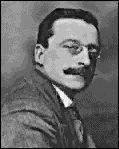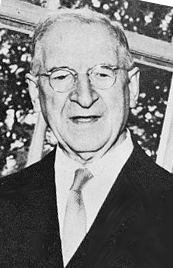Courtney Lerch’s Study Abroad Portfolio ~ 2005
English 201-Honors and English and 314
Study Abroad with Radford University
European Literary Trails Program
Director: Dr. Jolanta Wawrzycka
The content of this page is research done for Honors Credit
The Anglo-Irish War, 1919-1921
On January 22, 1919, two members of the Royal Irish Constabulary guarding a cartload of gelignite were shot and killed at Soloheadbeg, County Tipperary (87). This incident is thought first action to begin the Irish War of Independence or Anglo-Irish War (87). Ironically, on the same day, some Sinn Fein (Irish republican party which sought to end British rule) members met in Dublin “to constitute themselves the Irish national assembly, Dail Eireann, and issued a Declaration of Independence” (87). The leaders of Sinn Fein were Arthur Griffith, Eamon de Valera, and later, Michael Collins (88.
Arthur
Griffith Eamon de
Valera Michael Collins



Dail Eireann was declared an illegal organization on September 11,1919, and this caused the organization to basically become a hidden counter-state (90). de Valera was forced to go into hiding, and he eventually went to the United States and did not return to Ireland until 1920. While his absence could have caused a drastic blow to the Dail Eireann, Michael Collins took over guiding the association well. Not only was he a charismatic leader, but he was also skilled in getting loans that the counter-state needed (91).
Besides the leadership of Collins, the Dail Eireann also benefited from the development of arbitration courts (91-92). These courts eventually took power away from the British court system. The Dail realized how important this was, and in June 1920 it was decided “to establish a national court system; instead of arbitration courts, these would have the theoretical power of original jurisdiction” (92). This system gained strength throughout 1920, and by late in the year there were three judges per parish plus each Dail constituency had a District Court with five judges. The parish courts heard less serious cases, while the District Courts were for more major cases (92). While this court system was initially successful in taking judicial power away from Britain, it did not last long because attorneys and other professionals preferred the court system to which they were accustomed (92-93). While the Dail Eireann was trying to establish a system of government for Ireland, the physical war against Britain was raging on.
In 1919, incidents like the Soloheadbeg shooting were mainly isolated; however, in June a Royal Irish Constabulary inspector was shot and in September the “North Cork brigade of the Irish Republican Army (IRA) attacked a platoon of soldiers marching to church on Sunday” (93). The IRA’s weapon supply was always pretty weak, though, and in 1920 an order went out forbidding unauthorized use of force (93). Despite this fact, the IRA gained strength in the fall of 1920.
Around that time, the Dail courts were really successful in halting the British courts (94). A very important incident for the IRA occurred on November 21, which has come to be known as Bloody Sunday. On that day, Michael “Collins’s Squad and the Dublin Brigade Active Service Unit killed a dozen suspected British secret intelligence officers” (94). Also successful for the IRA at the time was a hunger strike organized by Terence MacSwiney, the Lord Mayor of Cork (94). According to Townshend, “MacSwiney symbolized the all-consuming dedication evoked by the republican cause” (96).


Terence MacSwiney Lloyd George
At first, the British were more surprised than anything else at the counter-state in Ireland (99). They banned the Dail Eireann as well as other nationalist groups like the Sinn Fein party and “fell back naturally into the familiar mixture of coercion and conciliation” (99-100). When Bloody Sunday occurred, Britain was shocked into action- the army was put on alert, searches became more frequent, and arrests were increased (101).
Two days before Christmas in 1920, de Valera returned to Ireland from the United States to find that both sides had suffered some losses and had a few successes (102). Soon he and the other Dail Eireann leaders began to realize that the IRA had the potential for break up, and they began to think about negotiating with the British (103). On the other side of the water, British officials were having the same thoughts; Lloyd George always had some level of communication with Sinn Fein (103). The actual treaty negotiations, however, did not occur for almost another year.
Between October 11 and December 6, 1921, de Valera and the Lloyd George tried to reach an agreement (105). Britain wanted Ireland to have “dominion” status, which de Valera turned down. After a back and forth battle, Irish delegates accepted George’s last proposal on December 5, 1921. It stated that the Irish must “pledge allegiance to the King ‘in virtue of the common citizenship of Ireland with Great Britain and her adherence to and membership of the British Commonwealth of Nations’” (107). The next day, on December 6, 1921, the first treaty since 1691 was signed between Ireland and Britain.
~~~~~~~~~~~~~~~~~~~~~~~~~~~~~~~~~~~~~~~~~~~~~~~~~~~~~~~~~~
Works Cited:
Townshend, Charles. Ireland: The 20th Century. New York: Oxford University Press, 1998.
Consulted Sources:
http://en.wikipedia.org/wiki/Irish_War_of_Independence
http://www.bbc.co.uk/history/war/easterrising/aftermath/af04.shtml
http://www.reference.com/browse/wiki/Anglo-Irish_War
http://www.regiments.org/wars/20thcent/20irish.htm
Pictures from:
http://en.wikipedia.org/wiki/Michael_Collins_%28Irish_leader%29
http://en.wikipedia.org/wiki/Eamon_De_Valera
http://en.wikipedia.org/wiki/Arthur_Griffith
http://www.thewildgeese.com/pages/irehome.html
http://en.wikipedia.org/wiki/David_Lloyd_George
Back to English Honors Project